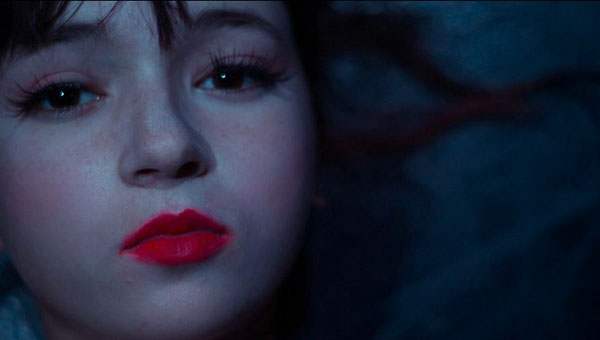
This is a guest post by Jen West.
When I contemplate women in film, two thoughts come to mind: women in front of the camera, and women behind the camera. We are all familiar with the stereotypical female characters in movies and TV shows that portray traditional, predictable roles. There’s nothing wrong with that, I suppose, but it isn’t teaching us anything new about what it’s like to actually be a woman. When I fell in love with independent film in the early 2000s, it was for one reason: I had never experienced anything as risky or as honest as filmmaking without rules or boundaries. This was especially true in terms of exploration of female characters. It was refreshing, enlightening and, eventually, life changing.
One of my favorite films of 2013 was Blue is the Warmest Color. It’s an outstanding example of including high-impact female characters. I stumbled into it one rainy afternoon in Atlanta, flying solo on a weeknight. I grabbed my bag of popcorn and took a seat in the nearly empty theater. I was originally intrigued by the trailer I had seen and the artwork of the mysterious girl with the bright blue hair. I soon saw that there was something different happening between these characters that I had never experienced before— a depiction of a true lesbian love affair on screen. I was sucked into the world of Adèle, a 15-year-old girl exploring love and sexuality for the first time. I know some would argue that the characters were a little too pretty, making the film feel a little like soft porn at times, but I found it to be intimate and intense. It wasn’t afraid to take us in the bedroom and expose the passion that existed between the two girls. Isn’t sexuality a part of all of our lives, whether in abundance or lack thereof? We shouldn’t be afraid to explore that. It was a brave film and the actresses held nothing back for those parts. That’s what independent film is all about— taking risks and pulling out raw emotions in the viewer. I liked that it made me feel vulnerable. I loved that snot dripped out of Adèle’s nose every time she cried. It was female authenticity. I want more of that.

Another recent stand-out performance for me was from Brie Larson in Short Term 12. This is a great example of not shying away from the ugly parts of life. Her character, Grace, deals with past sexual abuse as a life-changing event and she continues to deal with it while working at a adolescent treatment facility. She shows us the face of an abuse survivor, which isn’t always pretty. Everyone has demons that chase them down eventually. Each person’s coping process is unique. Grace is a beautifully broken and complex character who will go down as one of my favorites of all time. If you haven’t seen it, then you are missing a pivotal film in the indie universe.
I want the ugly. Give me the behind-closed-doors intimate moments that really mean something to my own struggles. I don’t care about surface appearances and the masks that each of us wear every day in order to fit in. The true self lies far beyond that. It’s a scary, but unifying experience to be let into another’s intimate universe. Film is a great medium to explore this concept, especially with female characters.
Nothing turns me on more than a powerful female performance, whether it be the actors on screen or the writers and directors behind the camera. As I’ve traveled the film festival circuit with short films of my own, I’ve always kept an eye out for my peers. Through this self-initiated challenge I’ve found the likes of Josephine Decker, Eliza Hittman, and Leah Meyerhoff. You should become familiar with these women. When you aren’t paid yet for your craft, when each film comes from your soul—that’s how you know someone is a real artist. It’s hard, sometimes even nearly impossible, but you do it anyway. There is absolutely no shame in wanting to be paid for your work, however there is something to be said for pursuing your passion just because it’s a part of your being. That’s the kind of filmmaker I strive to be.

For all of you female filmmakers out there— let’s keep creating characters that reveal something important about our humanity. It doesn’t matter if it’s done through humor or drama. For those of you who are film fanatics, or just the occasional theater dweller, I challenge you to discover more independent female-focused content and filmmakers. It’s easy to turn on Netflix and watch what’s on top of your recommended viewing list. Instead, why not dive into something different (but equally convenient) like Seed & Spark, or just dig a little deeper into your preferred medium for that independent film you’ve never heard of. Better yet, attend your local film festival and see what’s surfacing beyond the TV and movie theater. I guarantee that you’ll discover amazing female-focused content once you start searching.
Born and raised in Birmingham, Alabama, Jen West is a writer and director living in Atlanta, Georgia. She is known for Piece of Cake (2006), Crush (2011), Bubble (2013) and “Call Me” (2014 – music video for St. Paul and the Broken Bones). She wrote her feature script, Electric Bleau, as part of a creative residency with the Cucalorus Film Festival in 2014. Currently she is in preproduction for her next short, Little Cabbage and is crowdfunding on Seed & Spark.







